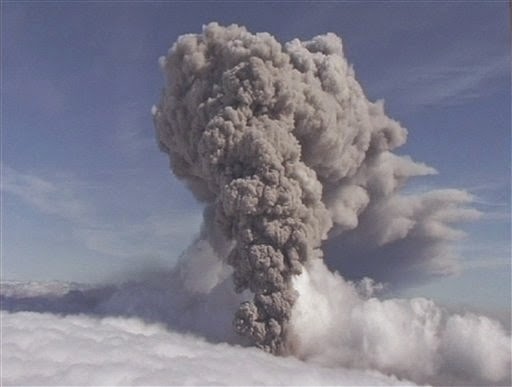
Iceland’s Bardarbunga volcano began erupting Saturday under the country’s largest glacier after a week of seismic activity rattled the area with thousands of earthquakes, the country’s Meteorological Office said.
The eruption prompted Iceland to raise its aviation alert level to red—the highest level on a five-point scale—indicating the threat of “significant emission of ash into the atmosphere.”
Seismic data indicates that magma from the volcano is melting ice beneath the Dyngjujokull icecap on the Vatnajokull glacier, Met Office vulcanologist Melissa Pfeffer said.
The remote area, 200 miles (320 kilometers) east of the capital of Reykjavik, is uninhabited.
She said it was not clear when, or if, the eruption would melt through the ice—which is between 100 and 400 meters (330 feet and 1,300 feet) thick—and send steam and ash into the air. She said it could take up to a day for the ice to melt—or the eruption might remain contained beneath Europe’s largest glacier.
Icelandic authorities on Saturday declared a no-fly zone of 100 nautical miles by 140 nautical miles around the eruption, but did not shut the country’s airspace.
“All airports are open and flights are on schedule,” said Olof Baldursdottir of Iceland’s Civil Protection Department.
A 2010 eruption of Iceland’s Eyjafjallajokul volcano produced an ash cloud that caused a week of international aviation chaos, with more than 100,000 flights cancelled.
Pfeffer said scientists were flying over the glacier Saturday to look for changes on its surface. Scientists were also monitoring a hydrological station downstream from the volcano for flooding—a common result of volcanic eruptions in Iceland.
She said the amount of ash produced by the new eruption would depend on the thickness of the ice.
“The thicker the ice, the more water there is, the more explosive it will be and the more ash-rich the eruption will be,” she said.
Iceland sits on a volcanic hot spot in the Atlantic’s mid-oceanic ridge and eruptions occur frequently, triggered when the Earth’s plates move and when magma from deep underground pushes its way to the surface.
Well-practiced emergency procedures mean eruptions in Iceland usually do not cause deaths. Authorities evacuated several hundred people, mostly hikers, earlier this week from the highlands north of the Vatnajokull glacier as a precaution.
But the impact of the tiny island’s volcanoes has been felt around the world.
Millions of people were stranded in April 2010, when aviation officials closed Europe’s air space for five days out of fear that ash from Eyjafjallajokul could harm jet engines.
European aviation authorities later changed their policy, giving airlines detailed information about the location and density of ash clouds but leaving decisions to airlines and national regulators.
A 2011 eruption of Iceland’s Grimsvotn volcano was far more powerful than Eyjafjallajokul but cause much less disruption.
Budget airline EasyJet, which flies between Britain and Iceland, said it was operating as usual. It said it would use ash-detection technology, satellite data and other information “to determine what, if any, changes it should make to its flying program” in the event of an ash cloud.
More information:
Icelandic Meteorological Office: en.vedur.is/
Note : The above story is based on materials provided by © 2014 The Associated Press. All rights reserved.









